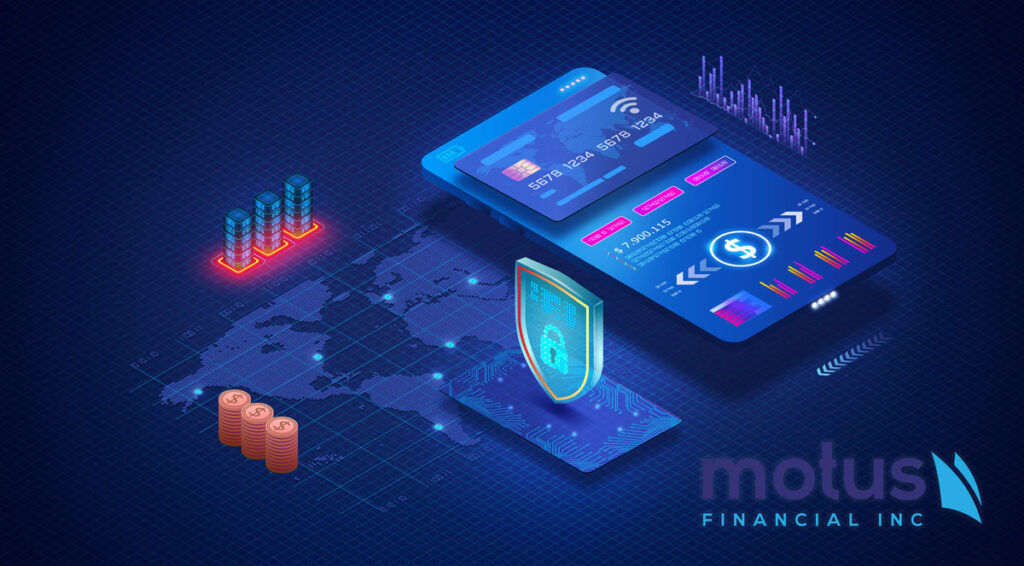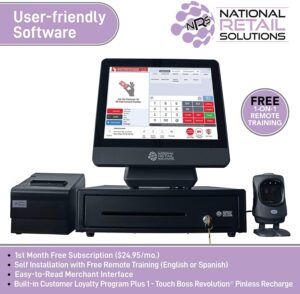
In the fast-paced world we live in, technology is constantly evolving and reshaping the way we go about our daily lives. One aspect that has undergone significant advancements is mobile credit card processing. As we look ahead to 2023, it’s essential to explore the potential future developments and trends that await us in this realm. From contactless payments to enhanced security measures, the future of mobile credit card processing is set to revolutionize the way we handle financial transactions on the go. Exciting times lie ahead, so let’s delve into what we can expect in the not-so-distant future.
1. Increased Integration with Mobile Wallets
With the rapid advance and widespread adoption of technology, mobile wallets have become an integral part of our daily lives. In 2023, we can expect to see an even greater integration of mobile wallets into our payment ecosystem. This integration will bring along several benefits, such as increased convenience, enhanced security features, and a seamless user experience.
1.1 Adoption of NFC Technology
Near Field Communication (NFC) technology has played a significant role in enabling contactless payments through mobile wallets. As we move further into 2023, the adoption of NFC technology will continue to grow, making it easier and more efficient for consumers to make payments simply by tapping their smartphones or other NFC-enabled devices on a payment terminal. This technology ensures quick and hassle-free transactions, eliminating the need for physical cards or cash.
1.2 Enhanced Security Features
Security has always been a top concern when it comes to digital transactions, and the integration of mobile wallets is no exception. In 2023, we can expect to see enhanced security features incorporated into mobile wallets to safeguard user information and prevent fraud. Measures such as tokenization, biometric authentication, and transaction encryption will provide users with peace of mind and instill confidence in mobile payment systems.
1.3 Seamless User Experience
One of the key advantages of mobile wallets is the seamless user experience they offer. In 2023, we can anticipate further improvements in the usability and functionality of mobile wallets. The user interfaces will become more intuitive, allowing for effortless navigation and transaction flows. Additionally, the integration of loyalty programs, coupons, and personalized offers within mobile wallets will enhance the overall user experience, making mobile payments more enticing for consumers.
2. Rise of Contactless Payments
The global pandemic has accelerated the adoption of contactless payments, and this trend is set to continue in 2023. Contactless payments provide a hygienic and convenient way to make transactions, reducing the need for physical contact and minimizing the risk of spreading germs.
2.1 Growing Popularity of QR Code Payments
QR code payments have gained immense popularity in recent years, and this trend is expected to continue in 2023. QR codes are simple graphics that can be scanned by smartphones to initiate transactions. The ease of use and low cost associated with QR code payments make them an attractive option for merchants of all sizes. Furthermore, QR code payments can be seamlessly integrated into mobile wallets, providing users with a unified payment experience.
2.2 Expansion of Biometric Authentication
Biometric authentication, such as fingerprint or facial recognition, has become increasingly prevalent in mobile devices. In 2023, we can expect to see the expansion of biometric authentication for contactless payments. This technology adds an extra layer of security, making it harder for unauthorized individuals to access a user’s mobile wallet. The rise of biometric authentication will further streamline the payment process, eliminating the need for passwords or PINs.
2.3 Adoption of Wearable Payment Devices
Wearable technology has gained significant traction in recent years, and it is projected to continue its growth in 2023. Wearable payment devices, such as smartwatches or fitness bands, provide consumers with a convenient and stylish way to make contactless payments. With the integration of payment functionalities into these devices, consumers can now leave their wallets and smartphones at home and make secure payments directly from their wearables.

3. Emergence of Blockchain-based Solutions
Blockchain technology has the potential to revolutionize the payment industry by offering greater transparency, security, and efficiency. In 2023, we can expect to witness the emergence of blockchain-based solutions in mobile credit card processing.
3.1 Greater Transparency and Security
One of the key benefits of blockchain is its inherent transparency. Every transaction recorded on a blockchain is visible to all participants, ensuring a high level of accountability and reducing the risk of fraud. Additionally, the decentralized nature of blockchain provides enhanced security, making it extremely difficult for hackers to tamper with or manipulate transaction data. As blockchain technology continues to mature, we can expect mobile credit card processing to leverage these advantages, providing users with a secure and transparent payment experience.
3.2 Streamlined Cross-border Transactions
Cross-border transactions have traditionally been associated with high fees, delays, and complexities. However, the adoption of blockchain technology can address these challenges and streamline cross-border payments. By eliminating intermediaries and leveraging smart contracts, blockchain-based solutions can enable faster and more cost-effective international transactions. In 2023, we can anticipate the integration of blockchain into mobile credit card processing, reducing friction in cross-border payments and facilitating global commerce.
3.3 Decentralized Payment Networks
Traditional payment networks are centralized and often controlled by a single authority, which may introduce vulnerabilities and inefficiencies. In contrast, blockchain-based payment networks are decentralized and operate on a peer-to-peer basis, minimizing the dependence on a central authority. This decentralization offers numerous benefits, including increased resilience, lower costs, and improved accessibility. As the adoption of blockchain technology expands, mobile credit card processing is expected to leverage these decentralized payment networks, providing users with a more robust and inclusive payment infrastructure.
4. Advancements in Mobile Point-of-Sale (mPOS) Systems
Mobile Point-of-Sale (mPOS) systems have transformed the way businesses accept payments by allowing them to turn smartphones or tablets into portable credit card terminals. In 2023, we can expect further advancements in mPOS systems, bringing new capabilities and benefits to merchants.
4.1 Integration of AI and Machine Learning
Artificial Intelligence (AI) and Machine Learning (ML) technologies are increasingly being integrated into various industries, and mobile credit card processing is no exception. In 2023, we can expect mPOS systems to leverage AI and ML to provide merchants with advanced data analytics, fraud detection, and personalized customer experiences. These technologies will enable merchants to make data-driven decisions, identify patterns and trends, and deliver tailored services to their customers.
4.2 Enhanced Inventory Management
Efficient inventory management is crucial for businesses of all sizes. In 2023, mPOS systems are likely to offer enhanced inventory management capabilities, allowing merchants to track and manage their inventory in real-time. By integrating inventory management features into mobile credit card processing, merchants can streamline their operations, optimize stock levels, and improve overall efficiency.
4.3 Real-time Analytics and Reporting
Timely and accurate data is essential for businesses to make informed decisions. In 2023, mPOS systems will provide real-time analytics and reporting features, empowering merchants with valuable insights into their sales performance, customer behavior, and inventory movement. This real-time data will enable merchants to adapt their strategies on the fly, optimize their business processes, and deliver a superior customer experience.

5. Growing Role of Artificial Intelligence (AI)
Artificial Intelligence (AI) is transforming various industries, and the mobile credit card processing sector is no exception. In 2023, AI will continue to play an increasingly significant role in shaping the future of mobile payments.
5.1 Personalized Customer Interactions
AI-powered algorithms can analyze vast amounts of customer data, enabling businesses to deliver personalized experiences and targeted offers. In 2023, we can expect AI to be integrated into mobile credit card processing systems, enabling merchants to understand their customers’ preferences better and tailor their offerings accordingly. By leveraging AI, merchants can foster stronger customer loyalty and drive customer engagement.
5.2 Fraud Detection and Prevention
Fraud is a persistent challenge in the payment industry, and AI has proven to be a valuable tool in detecting and preventing fraudulent activities. In 2023, AI-powered fraud detection and prevention systems will become more sophisticated, leveraging pattern recognition, anomaly detection, and machine learning algorithms to identify suspicious transactions in real-time. By employing AI, mobile credit card processing systems can provide users with a secure and fraud-free payment environment.
5.3 Predictive Analytics for Business Insights
AI can provide businesses with valuable predictive analytics, enabling them to make data-driven decisions and gain a competitive edge. In 2023, mobile credit card processing systems will leverage AI to generate actionable insights from transaction data, identify trends, and forecast future customer behavior. By harnessing the power of predictive analytics, merchants can optimize their pricing strategies, inventory management, and marketing campaigns, driving business growth and profitability.
6. Increased Focus on Data Security and Privacy
In an increasingly interconnected world, data security and privacy have become paramount. In 2023, the mobile credit card processing industry will focus more on ensuring robust security measures and protecting user data.
6.1 Adoption of Tokenization
Tokenization is a process that replaces sensitive payment card data with a unique token, rendering the data unusable even if intercepted by hackers. In 2023, we can expect mobile credit card processing systems to adopt tokenization as a standard security measure, providing users with an additional layer of protection. By tokenizing card information, mobile payment systems enhance security and minimize the risk of data breaches.
6.2 Compliance with Stricter Regulations
Regulatory requirements for data protection and privacy have become increasingly stringent. In 2023, the mobile credit card processing industry will place greater emphasis on compliance with these regulations, ensuring that user data is securely collected, stored, and processed. By adhering to stricter regulations, mobile payment systems will enhance trust among users and foster a more secure payment environment.
6.3 Stronger Authentication Measures
Authentication measures, such as passwords and PINs, are vital for securing mobile credit card payments. In 2023, the industry will witness the adoption of stronger authentication methods, such as biometrics and two-factor authentication, to further safeguard user accounts and transactions. These robust authentication measures will fortify the security of mobile credit card processing systems and reduce the risk of unauthorized access.

7. Expansion of Peer-to-Peer (P2P) Payments
Peer-to-Peer (P2P) payments have gained significant popularity in recent years, allowing individuals to send and receive money directly from their mobile devices. In 2023, we can anticipate the continued expansion of P2P payment capabilities.
7.1 Integration with Social Media Platforms
Social media platforms have become an integral part of our lives, and in 2023, we can expect to see greater integration between P2P payments and social media platforms. This integration will enable users to send and receive money seamlessly within their favorite social platforms, further enhancing convenience and facilitating social peer-to-peer transactions.
7.2 Simplified Cross-border P2P Transactions
Cross-border P2P payments have traditionally been complex and expensive. However, in 2023, advancements in technology, such as blockchain-based solutions, will simplify cross-border P2P transactions, making it easier and more affordable for individuals to send and receive money across borders. These streamlined cross-border P2P transactions will facilitate global connectivity and drive financial inclusivity.
7.3 Instant Settlement and Lower Fees
In 2023, we can expect to see faster settlement times and lower transaction fees in P2P payments. As blockchain technology continues to evolve, the settlement of P2P payments will become near-instantaneous, eliminating the need for intermediaries and reducing transaction costs. This instant settlement and lower fees will make P2P payments even more attractive, prompting greater adoption and usage.
8. Evolution of Mobile Card Readers
Mobile card readers have revolutionized the way businesses accept credit card payments. In 2023, we can anticipate further advancements in mobile card reader technologies, offering merchants a range of benefits.
8.1 Smaller and More Portable Devices
In 2023, mobile card reader devices will become even smaller and more portable, making them easier for merchants to carry and use. These compact devices will enable businesses to accept payments anytime, anywhere, providing greater flexibility and convenience. Smaller mobile card readers will appeal to a wide range of merchants, including small businesses and individual entrepreneurs.
8.2 Improved Compatibility with Smartphones
As smartphone technology continues to advance, so will the compatibility between mobile card readers and smartphones. In 2023, we can expect improved integration and compatibility between these devices, allowing for seamless connection and communication. The enhanced compatibility will ensure a smoother payment experience for both merchants and customers, eliminating any technical barriers or inconveniences.
8.3 Enhanced Card Reader Technologies
In 2023, we can expect mobile card readers to incorporate enhanced technologies to further improve the payment experience. For example, we may see the integration of contactless payment functionalities into card readers, enabling consumers to make tap-to-pay transactions using their mobile wallets or contactless cards. Additionally, card readers may leverage AI and machine learning algorithms to provide real-time feedback and recommendations to merchants, optimizing the transaction process and increasing operational efficiency.

9. Transformation of Payment Processing in Developing Countries
Developing countries often face unique challenges when it comes to payment processing, including limited access to banking services and financial inclusion. However, in 2023, we can expect to see a transformation in the payment processing landscape in these regions.
9.1 Greater Financial Inclusion
Mobile credit card processing has the potential to bring greater financial inclusion to underserved populations in developing countries. In 2023, we can expect to see increased efforts to provide mobile payment solutions to individuals who lack access to traditional banking services. By leveraging mobile technology, these individuals can gain access to basic financial services, such as payments, transfers, and savings, empowering them to participate in the formal economy.
9.2 Adoption of Mobile Banking Services
Mobile banking services have gained significant traction in developing countries, primarily due to the widespread availability of smartphones. In 2023, we can expect mobile credit card processing to be integrated with mobile banking services, providing users with a seamless and comprehensive financial platform. This integration will enable individuals to manage their accounts, make payments, and access other financial services directly from their mobile devices, bridging the gap between traditional banking services and mobile payments.
9.3 Integration with Local Payment Methods
In many developing countries, cash remains a predominant form of payment. However, mobile credit card processing can facilitate the transition from cash-based transactions to digital payments. In 2023, we can expect mobile payment systems to integrate with local payment methods, such as mobile wallets or digital currencies, allowing users to make payments using methods they are familiar with. This integration will accelerate the adoption of mobile payments in developing countries, driving economic growth and financial inclusion.
10. Shift Towards Subscription-based Pricing Models
The payment industry has witnessed a shift towards subscription-based pricing models in recent years, and this trend is likely to continue in 2023. Subscription-based pricing models offer various benefits for both merchants and consumers, driving innovation and competition in the mobile credit card processing sector.
10.1 Flexible Pricing Tiers
Subscription-based pricing models provide merchants with flexibility in choosing the pricing tier that best suits their business needs. In 2023, we can expect to see an expansion in the range of pricing tiers offered by payment service providers, catering to merchants of all sizes and industries. This flexibility will empower merchants to select the pricing plan that aligns with their transaction volume, allowing them to optimize their costs and maximize their profitability.
10.2 Value-added Services for Merchants
Subscription-based pricing models often come bundled with value-added services, providing additional benefits to merchants. In 2023, we can anticipate the introduction of new value-added services such as advanced analytics, marketing tools, and customer loyalty programs. These services will enable merchants to gain deeper insights into their business, attract and retain customers, and ultimately increase their revenue.
10.3 Higher Competition among Payment Service Providers
The shift towards subscription-based pricing models will lead to increased competition among payment service providers. In 2023, we can expect to see more service providers entering the market, each offering unique features and benefits to attract merchants. This heightened competition will drive innovation and push payment service providers to continually improve their offerings, resulting in better services, lower costs, and a wider range of options for merchants.





Leave a Reply